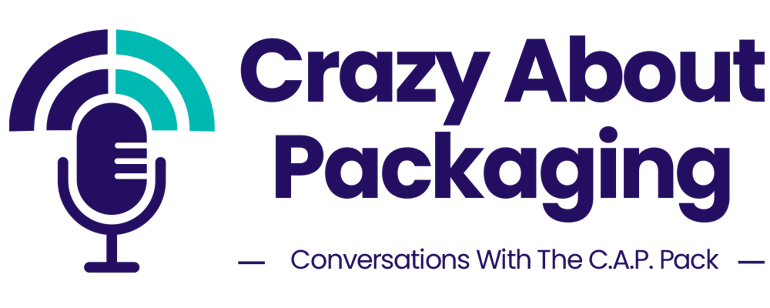
The global food packaging industry is experiencing a major shift toward the use of cleaner, safer materials that are better for people and the environment. Brands are transitioning away from certain chemicals and plastics that have come under scrutiny, replacing them with more food-safe packaging options.
In the latest episode of the Crazy About Packaging Podcast, the C.A.P. Pack discusses the key factors driving this trend and explains the “problematic” materials that are being phased out.
Sneak Peek for Episode #11
Check out the latest podcast to hear us talk about food-safe packaging options and the industry’s trend toward cleaner materials. You can watch or listen on our website or subscribe on Spotify, Apple, or Google. Want a sneak peek? Read on to see a little bit of what we cover.
What Are Clean Materials?
First: what do we mean by “clean” materials? There’s no one clear-cut answer. In fact, our three hosts all brought up different aspects of what they consider when they think about clean and problematic materials. Take a look at their definitions:
- Mike: “For me, clean materials are not just those that have little or no impact on health or environment, but also materials that are routinely and sustainably recycled or reused.”
- Natalie: “On top of recyclability, problematic chemicals can find their way into the environment as well. One of those chemicals being PFAS, which are known as ‘forever chemicals.’ These can be found in some water sources, which is likely as a result of them being used in applications where the waste was not properly disposed of or they were landfilled.”
- Jonathan: “I can remember years ago when I was working in an extrusion facility and they were running PVC films, shrink films, and cling films. And you walked in there and it was just this yellow cast of smoke. And so it's not only the clean materials from the food perspective, you also have to take into consideration the manufacturing process, the extraction process, and then ultimately the impact of that through migration of those materials into a food product.”
So does a material’s cleanliness come down to its recyclability, its longevity in the environment, its manufacturing process, or how it protects the consumer? The answer is all of the above. Clean, food-safe packaging materials, as Natalie puts it, should be “clean for people, clean for the planet.”
“Problematic” Materials Being Phased Out by the Packaging Industry
So if material cleanliness is about protecting consumers and the environment, what materials aren’t making the grade?
There are a few materials that the industry has been working to phase out, whether for safety concerns, recyclability, or a combination. These include BPA, phthalates, and PFAS — but in the packaging industry, the primary materials of concern are polystyrene, PVC, and PVDC coatings.
Each of these materials comes with some level of risk. And, as Natalie points out, while that doesn’t guarantee a negative outcome, it is something that we should be wary of. As she explains it, “Proposition 65 warns of certain materials being carcinogens, bringing increased risk for some cancers. For BPAs, there is a risk that they’re hormone disruptors. We don’t necessarily know what the threshold is or who’s most susceptible. The bottom line is that if there’s an unnecessary risk, why take it?”
In the spirit of protecting consumers and not taking unnecessary risks, food packaging companies are working to replace these materials with cleaner options.
Why Now?
The industry is seeing increased pressure to stop using these problematic materials — but why is there such a big push now?
There are plenty of reasons for this push, but here are a few:
Government and Industry Regulations
Governments and industry groups are playing a pivotal role in this shift. We have seen increased regulations for food-safe packaging and stricter requirements around acceptable materials. In fact, we discussed this in Episode 6: Government Pressure for Sustainable Food Packaging.
Social Media
The rise of social media has also contributed heavily to the shift toward cleaner materials. When people have a platform, they can share information faster than ever before, giving consumers a voice to raise awareness of health and sustainability issues related to certain packaging materials.
What Next?
We know what materials to avoid, but where do we go from here? Manufacturers are working to replace these problematic materials with cleaner options.
Currently, there are a few choices, most notably polypropylene (PP), polyethylene, and PET. At ICPG, our primary focus has been on polypropylene solutions, particularly our XPP solution. We love XPP because it’s clean, food-safe, recyclable — even our high-barrier XPP with RE-BA — and can serve as an effective replacement for PS.
Talk Clean and Food-Safe Packaging with the C.A.P. Pack
The C.A.P. Pack is passionate about food packaging safety and sustainability, which is why we’re committed to creating new material solutions to address the industry’s biggest challenges.
Do you pay attention to the materials your food is packaged in? Do you have thoughts on the industry’s path toward a cleaner future? Tell us your thoughts — follow us on LinkedIn, Facebook, and Instagram to join the conversation! And be sure to listen and subscribe on Spotify, Apple, Google, or our website.



